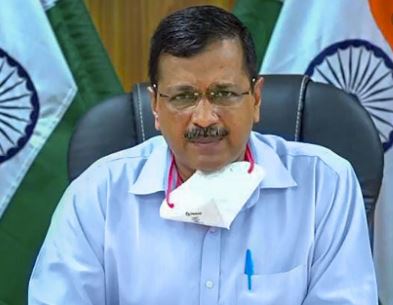Delhi Government Utilises Only 21 Percent of Environmental Fund Since 2015
 Chief Minister Kejriwal
Chief Minister Kejriwal
In a continuing example of the apathy when it comes to pollution in the national capital, an RTI query has discovered that the Arvind Kejriwal led Delhi government has spent only 21 percent (Rs 282 crore) of the Rs 1298 crore collected by way of an environment compensation charge from Diesel goods vehicles entering the capital since 2015. The charge, that was implemented on yet another intervention by the Supreme Court to prod the government into action, was implemented with the South Delhi Municipal Corporation (SDMC) entrusted with collecting and depositing it. The RTI query was filed by activist Amit Gupta.
Even out of this Rs 281 crore, almost 96% of the money has been spent on just one project, the Delhi-Meerut Regional Rapid Transport System (RRTS), being implemented by the National Capital Region Transport Corporation (NCRTC).
Interestingly, the government has done better with the funds collected under the Air Ambience Fund, set up in 2008. This fund, which collects 25 paise on every litre of Diesel sold in the capital, has collected Rs 547 crore since inception, with the government actually spending Rs 527 crore out of this total.
While the Delhi government will have its share of excuses for non-utilisation of the funds, it is a fact that the government has failed miserably to take strong, long term measures. Preferring to ride out criticism in the worst months of October – December , while taking token measures like the foolish ‘switch off your engines at red lights’ campaign. The smog tower/s built on a push from the SC to check its worth is a classic example, as the towers have expectedly failed to make any impact, and enriched only contractors .
The city has also made a fine art of blaming all its troubles on its neighbouring states, like the issue of crop burning, thermal power plants, or even dust from storms. Without considering that it is the same states that provide it with its water, power, and even the labour needed to keep the city going.
A classic example is Delhi’s atrocious record on rooftop solar. With a target of 2700 MW plus by 2022, the city has achieved under 10% of those numbers, thanks to the lack of intent to push its discoms harder for promoting the scheme as well as approvals. In a city that generates almost no power of its own, a strong solar rooftop segment would have done wonders for self sufficiency as well as cutting down dependence on costly, dirty thermal power. It would also have given more weightage to the city government’s insistence on shutting down these plants, without quite specifying where it would get the power from. Or by its willingness to drive up power prices for all, even as it subsidises over 80% of its power consumers.
Quite simply, on the issue of pollution, as a relatively rich state, the Delhi state government has failed to support the move towards lower pollution and more sustainable solutions. These solutions should ideally include incentivising renewable energy both within and outside state limits. And perhaps pioneering the use of large battery systems to balance out the grid with subsidies even.
Poor utilisation of funds collected through such cess’s and surcharges is also not unique to the Delhi government, and it is time the lawmakers in the country took a more holistic view on collecting such and utilising them with strict audits on utilisation every year.




